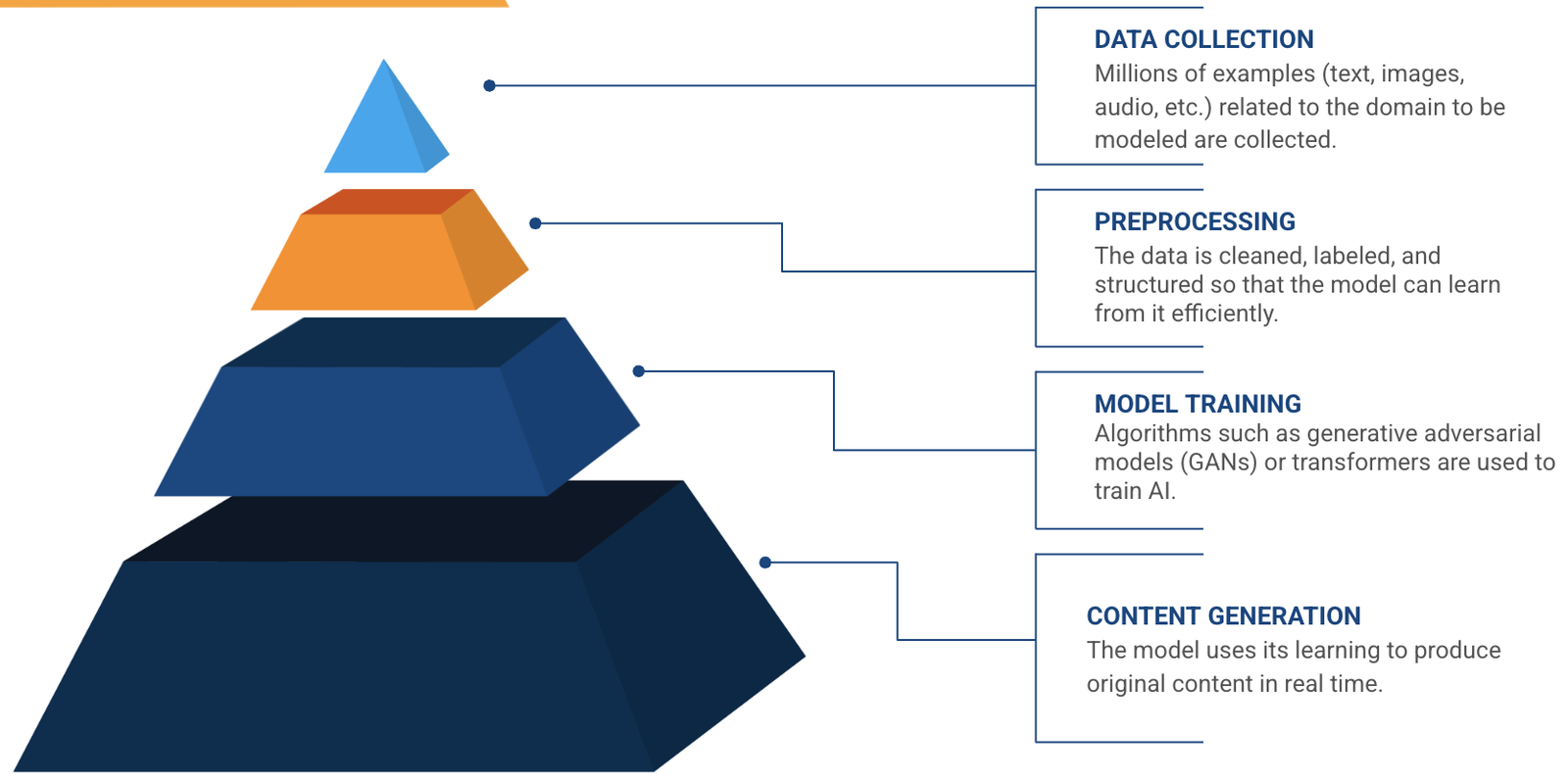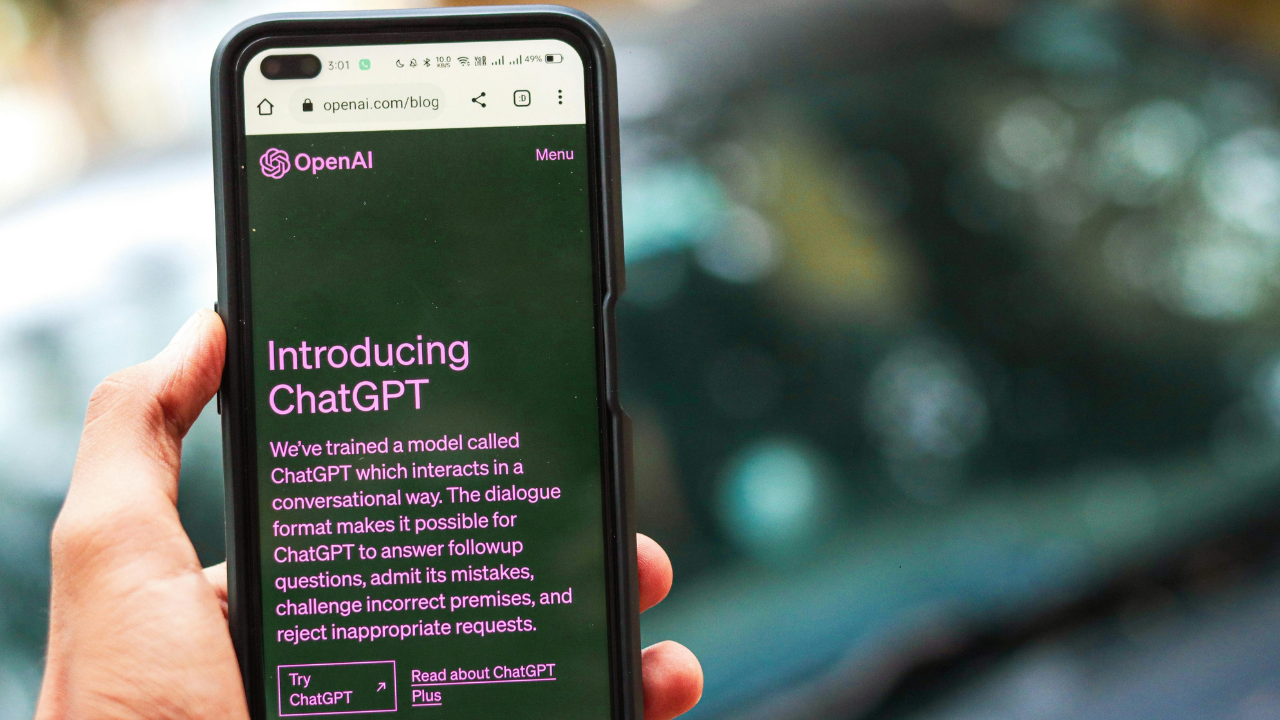
What is generative AI? How it works, implementation, and examples
Table of contents
Quick Access

Artificial intelligence (AI) has revolutionized the business landscape in recent years, but one of its most promising and disruptive branches is generative AI.
This technology is transforming everything from customer service to content generation, product design, and data analysis.
For business leaders seeking to understand and implement this innovation, it is essential to understand its foundations, benefits, challenges, and practical applications.

What is generative AI?
The definition of generative AI refers to a set of artificial intelligence models designed to create original content from existing data. Unlike traditional models that analyze and predict, generative models are capable of producing images, text, audio, code, videos, and more, simulating the style and context of the data they were trained on.
These models use advanced algorithms, primarily deep neural networks such as transformer-type models, to learn complex patterns in large volumes of information. A classic example is ChatGPT, which generates coherent natural language responses from a conversation, or DALL·E, which creates images from textual descriptions.
How does generative AI work and how does it process data?
Generative AI works by training with large amounts of data. These models learn the structures, sequences, and characteristics of the input data and, once trained, can generate new content that maintains consistency and relevance with the learned patterns.
Data processing stages:
- Data collection: Millions of examples (text, images, audio, etc.) related to the domain to be modeled are gathered.
- Preprocessing: The data is cleaned, labeled, and structured so that the model can learn from it efficiently.
- Model Training: Algorithms such as generative adversarial models (GANs) or transformers (such as GPT, BERT, or T5) are used to train the AI.
- Content Generation: Based on a request (prompt), the model uses its learning to produce original content in real time.
This process is what allows generative AI to create personalized, context-aware, and relevant content for each business need.

Examples of generative AI in practice
Examples of generative AI are already tangible and useful in multiple sectors. Here are some specific cases:
- Marketing and Content: Automated generation of articles, product descriptions, video scripts, social media posts, or personalized advertising campaigns.
- Customer Service: Chatbots and virtual assistants that better understand human language and offer more accurate and empathetic responses.
- Product Design: Models that create visual prototypes from written ideas or sketches.
- Medicine: Generation of synthetic medical images for model training, automatic clinical history summaries, or diagnostic predictions.
- Legal and Financial Industry: Automation of contracts, regulatory summaries, report generation, and interpretation of complex data.
Benefits of implementing generative AI in companies
The implementation of generative AI brings multiple benefitsFor companies, especially when applied strategically:
- Time and resource savings: Automate repetitive tasks such as content writing or analyzing large volumes of data.
- Improved productivity: More efficient teams thanks to tools that enhance their daily work.
- Innovation and differentiation: Development of new products, services, and unique customer experiences.
- Scalable personalization: Creation of highly personalized experiences for thousands of users simultaneously.
- Data-driven decisions: Predictive and generative analysis that improves strategic decision-making.
In business contexts, these benefits translate into a clear and sustainable competitive advantage.

How to implement generative AI in an organization?
Many leaders wonder how to implement generative AI without compromising their company's current operations. Here are the key steps:
- Initial diagnosis: Identify processes that can be improved with generative AI, such as customer service, content generation, or data management.
- Define clear objectives: Establish what you hope to achieve with the implementation: cost reduction, service improvement, automation, etc.
- Select technologies and models: Choose generative AI tools that align with business needs.
- Integration with existing systems: Adapt the technology to the current infrastructure, ensuring compatibility and scalability.
- Team training: Train staff to make the most of the new tools.
- Continuous evaluation and adjustment: Measure the impact, adjust the strategy, and evolve according to needs.
In this process, having an experienced partner is key. Rootstack has supported companies across various sectors in the adoption of generative AI technologies, offering technical advice, integration, and implementation with a qualified team with proven experience.
From identifying opportunities to implementing practical solutions, Rootstack is a strategic ally on the path to business innovation.
Challenges of implementing Generative AI
Although the benefits are significant, there are also challenges to implementing generative AI that leaders must consider:
- Data Privacy: It is necessary to ensure that the data used for training and generation complies with data protection regulations.
- Model Biases: AI can reproduce or amplify biases present in training data, which requires constant monitoring.
- Adoption Cost: The initial investment can be high, although the long-term return compensates for this expense.
- Lack of Qualified Personnel: Effective implementation requires experts in AI, data science, and software development.
- Change Management: Adapting processes and business culture to new technologies is not always easy.
Facing these challenges requires a well-planned strategy, accompanied by professional advice and a long-term vision.

Conclusion
Generative AI represents a technological evolution of great impact for modern organizations. Understanding what generative AI is, how it works, and how to implement it effectively can make the difference between a company that innovates and one that falls behind.
For business leaders, this guideIt provides a solid foundation for evaluating opportunities, planning strategies, and propelling your company toward a future powered by artificial intelligence.
And with partners like Rootstack, the path to digital transformation with generative AI is more secure, agile, and profitable. Contact us.
We recommend you this video
Related blogs

Microservices architecture: Designing scalable systems

How an MCP works explained for CEOs: the Host–Client–Server model without technical jargon

The cost of not adopting an MCP standard for AI by 2026: risks and inefficiencies

Real-world examples of MCP: from customer support to process automation

What is a Model Context Protocol (MCP) and why will it shape the future of enterprise AI?
